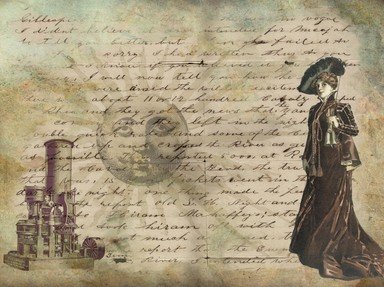Quiz Answer Key and Fun Facts
1. 1920: Although written in 1916 whilst the author worked in a WWI hospital, this debut novel by one of the best-loved writers of the 20th century was not published until 1920 in the US, with the first UK edition the following year. When 'Penguin' began publishing in 1935, this one was one of the ten works chosen for its maiden release. Which novel is this?
2. 1921: This adventure story brings together two of the most popular characters created by the author who pioneered the 'Lost World' literary genre. Set in darkest Africa, the plot follows one character's journey through unexplored country to find the other. Which novel is this?
3. 1922: Set 20 years into the future (so 1943), this debut novel by the author who coined the term 'robot' describes the transformational effect on society of virtually free energy. Unfortunately, outbursts of nationalism and religious fervour lead to the largest global war in history. Which novel is this?
4. 1923: This is the final complete novel by a writer regarded as one of the greatest of all English-language novelists. Set in the south of France during the French Revolution and the rise of Napoleon, the story follows one man's attempt to withdraw from a life of violence and conflict. Which novel is this?
5. 1924: Written by an author nominated 16 times for the Nobel Literature prize, this was remarkably the last novel published prior to his death in 1970. Known for an ironic style, his novels focus on the class differences in British society during the era of Empire in the early 20th century. Which novel is this?
6. 1925: Garnering only mixed reviews and selling poorly, the author died in 1940 believing his/her magnum opus a failure. In 1998, the "Modern Library" voted this story of decadence and idealism set in the Roaring Twenties as the best American novel of the 20th century. Which novel is this?
7. 1926: Our next book is the first published novel by a future Nobel laureate who would become one of the most celebrated authors in the literature of the American South. The protagonist in this novel is a wounded aviator, returning home to Georgia after World War I. Which novel is this?
8. 1927: This novel is by a much-lauded author whose works are notable for their criticism of American capitalism and materialism in the inter-War period. Written in a satirical style, religion and the 1920s American public attitude towards it are the main focus of this particular work. Which novel is this?
9. 1929: Written by a World War I veteran, this novel describes the extreme physical and mental stress of a soldier's life and the detachment from normality many of them felt when returning home after the war. The 1930 film adaptation won Oscars for Best Director and Outstanding Production. Which novel is this?
10. 1929: Our final 1920s novel was the debut publication by an author who would become one of the literary legends of the 20th century. A work of vaguely historical fiction, the novel is based very loosely on the life and death of the 17th-century buccaneer Henry Morgan. Which novel is this?
Source: Author
EnglishJedi
This quiz was reviewed by FunTrivia editor
LadyCaitriona before going online.
Any errors found in FunTrivia content are routinely corrected through our feedback system.


